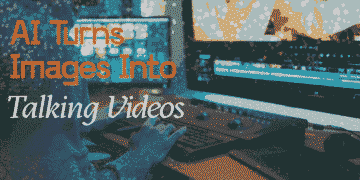Accurate payroll processing is critical for both retaining employee trust and complying with complex labour requirements. Any kind of mistake in payroll will result in workers being overpaid or underpaid, lowering morale, putting employees in financial hardship, or exposing the company to gigantic penalties.
The synchronisation of time and attendance tracking with payroll systems is a highly significant and important step in this process, particularly for small and medium-sized enterprises where precision and efficiency can have an impact on working. Solutions customised to SMB services help organisations bridge the gap between tracking employee hours and delivering correct payments.
Non-computerised systems have become outdated and highly risky in both remote and flexible workforces in this present era. Employees may work from multiple locations and while working in off-hours, making it harder to reliably collect and verify their exact working timing. By adopting such payroll processes, errors can be controlled to a great extent and enhance accuracy as well as transparency between employers and employees.
Implement Automated Time-Tracking Systems
Manual working may result in errors and even payroll fraud, affecting both expenses and confidence. It is much easier for employees to mismanage working hours. Modern automated time-tracking systems not only enable real-time monitoring but also make it easier for employees to report their hours, whether they work on-site, remotely, or flexibly. In this way, we can manage breaks, overtime, and even numerous job codes for large workforces easily and smartly.
Biometric attendance through scanning machines or mobile apps is such a unique feature through which the attendance of the staff can be ensured to be 100% accurate. Similarly, geofencing is also a unique feature which ensures the location of the employees accurately and makes it easier for the employers to curb the practice of working from unauthorised locations. According to the Society for Human Resource Management (SHRM), organisations that implement such solutions often experience faster payroll runs, fewer disputes over logged hours, and a significant decrease in time theft. These systems also make it easier to scale processes as the business grows, further future-proofing your operation.
Establish Clear Attendance Policies
Such a trusted method is only useful when it is followed by changing policies instantly, as the best systems also cause failure if they do not follow consistency and lose reliability.
Clock-in and clock-out times, the process for reporting absences or off time, breaks, and mismanaging overtime and remote work should be properly and instantly reported regardless of favouritism and nepotism. Designed policies ensure that all team members are well aware of the requirements and demands of the departments while lessening the arising issues.
All employees should be provided access to ask questions regarding their queries if they arise, which will definitely ameliorate the digital process, and they will find opportunities for their improvements and working style. A campaign should be started when any new system is launched or any kind of change is made. Reinforcing these policies during team meetings or by making resources conveniently available through an online portal can further increase compliance and understanding across varying shifts or remote locations.
Integrate Time-Tracking Systems with Payroll Software
All kinds of discrepancies should be checked minutely at the time of transferring manual data into the payroll system. As manual entry aids workload physically as well as mentally for HR teams and also creates chances of errors. Integration between time and attendance systems and payroll software ensures that data flows automatically, computerising in real-time and keeping both systems synchronised.
A solid technical solution confirms accuracy and also saves HR teams valuable time. Payroll is always generated using the most up-to-date and reliable data. Seamless integration also improves security and ease, making it easier to follow labour laws and policies and prepare for audits because every transaction is traceable and uniform. Such a linked environment can allow features such as automatic notifications, which reduce administrative load and streamline payroll processing.
Conduct Regular Audits and Compliance Checks
Even the most reliable electronic system needs thorough check and balance. Regular audits help to ensure that no discrepancy is left either on behalf of office staff or by mismanagement. Regular audits to review both time and attendance records should be scheduled to point out any kind of discrepancies at an early stage whether caused by employee misunderstandings intentionally or unintentionally. Further, audits process also assess whether time-off requests, overtime calculations, and break requirements are being properly documented and implemented.
Moreover, routine checks of entries also make sure that all data aligns with relevant labor regulations, minimizing the chance of legal disputes or costly fines. Proactive auditing is especially important in regions with rapidly changing employment laws. Timely checking data and payroll calculations, explain a commitment to fair labour standards and provide peace of mind to both employees and regulatory agencies. Regularly and thoroughly auditing practices guarantee accuracy of record and transparency and also identify issues before they escalate.
Leverage Advanced Technologies
Organizations which are ready to bring the latest changes in their record and system by incorporating technology are getting progress and lessen financial technical losses. Such technology also secured more profit by helping predict staffing needs and reduce unnecessary overtime.
In all industries such as construction and manufacturing, wearable devices like smart badges enable hands-free, real-time tracking and offer versatility where traditional systems might not work properly and face issues.
Such innovations enhance the employer’s ability to manage resources effectively while maintaining accuracy and transparency. Automated notifications and predictive analytics enable companies to stay energetic, rather than just reactive, in addressing labour concerns. As technology evolves, businesses can adapt more rapidly to changing operational requirements and employee expectations, preparing the organization for future compliance requirements and shifts in workforce trends.
Read Also: Isotonix Lawsuit Explained: Legal Issues FDA Warnings
Provide Ongoing Training and Support
Bringing digital systems and new policies can only be successful with proper training sessions and guidance to employees. All staff should participate in training sessions ensuring they understand both technical aspects of new systems and the purposes behind policy changes. Periodical refresh courses, updating documentation in line with system upgrades, will be definitely helpful egular refresher trainings, easily accessible documentation, and helpdesk support further smooth out ongoing operations and reduce frustration. Investing in continuous learning also future-proofs the organization, enabling teams to implement updates efficiently as legal or business needs evolve, and enhancing user adoption rates for new technologies.
Final Thoughts
Bringing together accurate time and attendance tracking with optimized payroll processes is crucial for any organization seeking to enhance accuracy, mitigate compliance risks, and cultivate a positive organizational culture. Forward-thinking companies that embrace automated solutions, establish clear guidelines, proactively audit processes, leverage emerging technologies, and maintain a commitment to employee training lay the foundation for reliable payroll and greater workforce satisfaction. By adopting these best practices, businesses can confidently navigate the complexities of today’s labor environment and position themselves for long-term success.








































